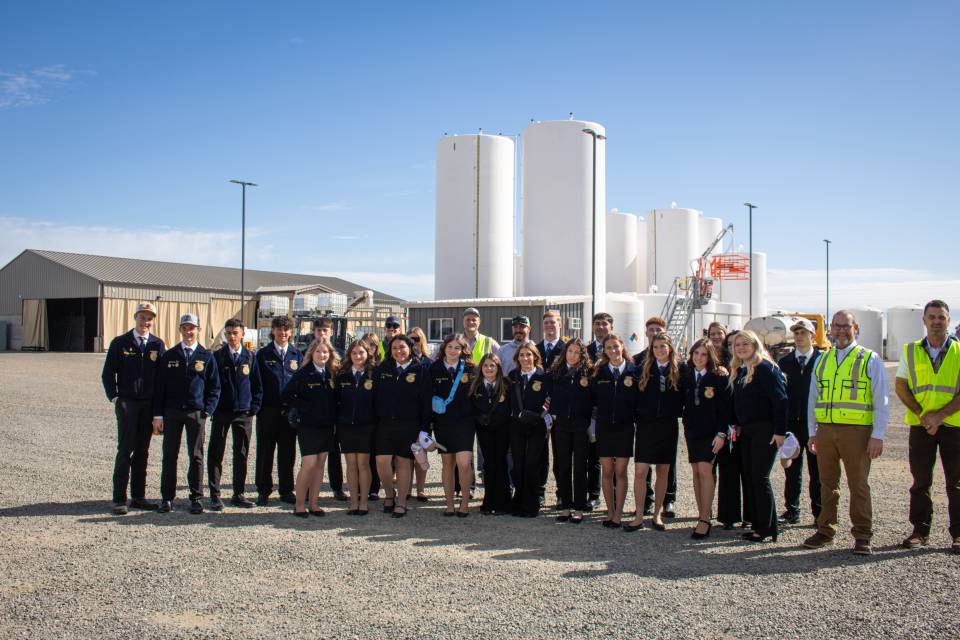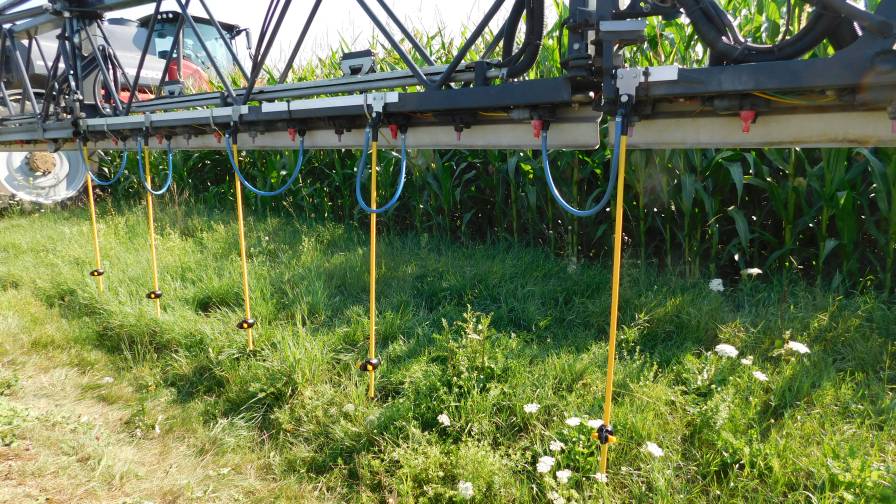CropLife America: Pollinator Health, Clean Water Act Among Top Concerns For 2015

Greenwood, CLA
Looking back on 2014, the crop protection industry made much progress toward helping to develop more efficient and effective policies that benefit U.S. agriculture. CropLife America (CLA) looks forward to opportunities for our industry to further advance policy at both the local and federal levels.
Pollinator Health
Protecting pollinators is one of the crop protection industry’s top concerns. Some of the factors identified that can negatively impact pollinator health include the Varroa mite, availability of forage, management practices and the misuse of pesticides.
Recent reports have cited certain crop protection products such as neonicotinoid insecticides as a potential leading cause of bee colony loss. Neonicotinoid insecticides have been used in the U.S. for many years without significant effects on populations of honeybees. The principal use of neonicotinoids as a seed treatment keeps exposure to pollinators to a minimum and also reduces potential soil surface and worker exposure. Industry efforts are continually underway to further reduce these small risks.
Recent overwintering loss surveys indicate improvements in managed honeybee colony population levels. Survey results for the 2013-14 winter released by the USDA, the Bee Informed Partnership and Apiary Inspectors of America show overwintering losses of 23.2% of managed honeybee colonies in the U.S. compared to 30.5% reported for the 2012-13 winter.
We anticipate increased engagement at the federal and executive level to address this pressing issue. In April 2014, the House Agriculture Committee’s Subcommittee on Horticulture, Research, Biotechnology and Foreign Agriculture hosted a hearing to discuss approaches to managing the potential threats to pollinators. In June, President Obama issued the Presidential Memorandum calling for immediate action against the threats affecting honeybees and other pollinators. CLA applauds these actions and the federal government’s commitment to using accurate research to save our pollinators, and we expect continued involvement from the executive level.
HR 5447 represents another key step in addressing pollinator health issues, specifically the Varroa mite and its impact on managed honeybee colonies. The bill seeks to amend the Federal Insecticide, Fungicide and Rodenticide Act (FIFRA) by expediting the registration of products that improve pollinator health by controlling these mites and other pests of honeybees. HR 5447 also requires that the Secretary of Agriculture and the Administrator of the EPA submit reports on the effects of Varroa mites and the Agency’s actions to address them.
We are optimistic that HR 5447 will help lead to the development of a comprehensive approach to improve the health of managed pollinator bees and cultivate robust pollination services for American agriculture. CLA also awaits the release of the National Pollinator Health Strategy from the President’s Pollinator Health Task Force, which will include a pollinator research action plan, a public education plan and recommendations for public-private partnerships. Furthermore, member agencies of the task force are developing plans to enhance pollinator habitat on their managed lands and facilities. While CLA waits for the strategy report, we look forward to collaborating with Congress, stakeholders and regulators to address pollinator well-being.
 Endangered Species Act
Endangered Species Act
The Endangered Species Act (ESA) continues to be an important measure to protect our nation’s vulnerable animal populations, but the current pesticide consultation process does not work. The crop protection industry and American agriculture faces a regulatory overlap between the EPA, USDA, the U.S. Fish and Wildlife Service (FWS) and the National Marine Fisheries Service (NMFS). This stands to impact farmers and ranchers through product use limitations, the establishment of buffer zones and other unwarranted restrictions. CLA is pleased, however, to see the recent cooperation among federal agencies to develop solutions for the betterment of both wildlife and farming.
In April 2013, the National Academies of Sciences (NAS) released the report “Assessing Risks to Endangered and Threatened Species from Pesticides,” which re-affirmed EPA’s rigorous registration process. The EPA, USDA, FWS and NMFS took into consideration the recommendations of the report and have begun to implement changes. In a December status report, the agencies claimed that they had built a collaborative relationship among the federal partners; clarified roles and responsibilities for the agencies; and improved stakeholder engagement and transparency during review and consultation processes, among other actions. CLA is encouraged by the actions taken as a result of the NAS report and anticipates continued improvement with ESA policies in 2015.
Clean Water Act Waters Of The U.S.
CLA is concerned about the potential impacts of new Clean Water Act (CWA) proposed regulations on crop protection product applications and agriculture. Released on March 25, the rulemaking gives EPA control over certain crop protection product applications near land and water features such as puddles, ponds and ditches. With the power to dictate land-use decisions and farming practices in or near them, EPA and the U.S. Army Corps of Engineers will make it more difficult to farm or change a farming operation to remain competitive and profitable.
CLA believes that states must be more closely consulted on the management of their waters in order to empower farmers to independently make productive decisions. Congress should move forward on the passage of HR 935, the Reducing Regulatory Burdens Act of 2013, which would amend FIFRA and CWA to clarify Congressional intent. In addition, HR 935 would eliminate the requirement of National Pollutant Discharge Elimination System permits for the use of pesticides approved under FIFRA. CLA joins in the call for EPA to “Ditch to the Rule!”





